The Amarna Letters: Diplomatic Correspondence In Ancient Egypt
A. Sutherland - AncientPages.com - Amarna Letters also known as Amarna Tablets are mostly diplomatic letters (with a few myths and epics) dated to an interesting, historical period in ancient Egypt, related to the reigns of pharaoh Akhenaten of the 18th Dynasty of Egypt and his wife Nefertiti, and Amenhotep III (1402-1364).
In 1887, local Egyptian peasants found a few tablets in the Akhenaten’s palace complex ruins.
Amarna Akkadian letter. Image credit: Capmo - Public Domain
Famous English Egyptologist William Matthew Flinders Petrie (1853 – 1942), was one the first excavators of the Amarna Tablets in 1891-92; later other archaeologists helped to reveal the rest of the documents.
There are 382 tablets written in cuneiform characters and 350 of them are letters), which can be found in museums of Berlin, London, and Cairo. The documents are written in the Akkadian language.
The Amarna Tablets were found in Amarna, now an archaeological site located near the modern city of Tell-Amarna (“Hill at El-Amarna”), with the remains of Akhenaten’s ancient capital.
They constitute a very important historical documents and reflect a cosmopolitan culture of the region, the so-called a "cuneiform culture" that throughout most of the second millennium extended to the east of Assyria and Babylonia, the Fertile Crescent, over into Asia Minor.
The Amarna letters still remain documents of the highest importance because they provide the rich evidence they provide for the social and political history of Syria and Palestine in the fourteenth century BC.
The tablets were diplomatic letters sent to Egypt from abroad, from the kings of Babylonia, Assyria, Hittites in Eastern Asia Minor, Mittani, and Cyprus. However, most of this correspondence was sent from vassal rulers in the neighboring region as for example from Ugarit, Syria-Palestine (Canaan, Lebanon, Ugarit, and the lands located in the region of the eastern part of the Mediterranean Sea.
The documents deal with a variety of subjects, such as exchange of gifts between rulers, news about events in distant Phoenician cities: Byblos, Tyre, various requests regarding food, military affairs, and diplomatic marriages.
There are also diplomatic letters dealing with serious concerns about military threats. A few tablets from Amarna are covered with legends and myths. There is, for example, the famous myth about Nergal and Ereshkigal, a famous, passionate love story that takes place in the Mesopotamian Underworld.
In 1992, William L. Moran (1921 – 2000), an American Assyriologist, translated the 350 Amarna Letters into English for the first time.
Written by – A. Sutherland - AncientPages.com Senior Staff Writer
Updated on June 19, 2023
Copyright © AncientPages.com All rights reserved. This material may not be published, broadcast, rewritten or redistributed in whole or part without the express written permission of AncientPages.com
Expand for referencesMore From Ancient Pages
-
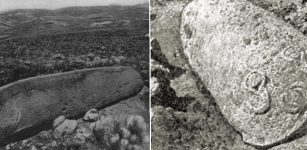 Mysterious 2000-Year-Old Carved Vishap Stone Monuments Of Armenia
Featured Stories | Dec 13, 2016
Mysterious 2000-Year-Old Carved Vishap Stone Monuments Of Armenia
Featured Stories | Dec 13, 2016 -
 Jolabokaflod – Iceland’s Wonderful Christmas Book Flood Tradition – Exchange Books As Christmas Eve Presents And Spend The Evening Reading
Ancient Traditions And Customs | Dec 21, 2017
Jolabokaflod – Iceland’s Wonderful Christmas Book Flood Tradition – Exchange Books As Christmas Eve Presents And Spend The Evening Reading
Ancient Traditions And Customs | Dec 21, 2017 -
 Warming Of North Pacific Helped First Human Migration From Asia To North America
Archaeology | Dec 15, 2020
Warming Of North Pacific Helped First Human Migration From Asia To North America
Archaeology | Dec 15, 2020 -
 Unexplained Phenomenon In Ancient Ireland – When Legends, Science And Real Events Collide
Featured Stories | Apr 19, 2018
Unexplained Phenomenon In Ancient Ireland – When Legends, Science And Real Events Collide
Featured Stories | Apr 19, 2018 -
 Mysterious Disappearance Of Explorer Peng Jiamu In Lop Nur – The Wandering Lake
Featured Stories | Dec 20, 2018
Mysterious Disappearance Of Explorer Peng Jiamu In Lop Nur – The Wandering Lake
Featured Stories | Dec 20, 2018 -
 Ancient Indigenous Carvings On Boab Trees – Time To Rescue Ancient Art Before Trees Disappear
Archaeology | Oct 12, 2022
Ancient Indigenous Carvings On Boab Trees – Time To Rescue Ancient Art Before Trees Disappear
Archaeology | Oct 12, 2022 -
 Ancient Colorful Nile-Scene Mosaics, Plastered Walls, Water Cistern Unearthed On The Shore Of The Sea Of Galilee
Archaeology | Sep 27, 2022
Ancient Colorful Nile-Scene Mosaics, Plastered Walls, Water Cistern Unearthed On The Shore Of The Sea Of Galilee
Archaeology | Sep 27, 2022 -
 Saraswati – Hindu Goddess Of Knowledge, Learning And Vedic Symbol Of Speech, Vach
Featured Stories | Jun 23, 2021
Saraswati – Hindu Goddess Of Knowledge, Learning And Vedic Symbol Of Speech, Vach
Featured Stories | Jun 23, 2021 -
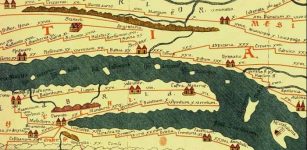 Tabula Peutingeriana: Huge Ancient Roman Map Created By Unknown Cartographer
Artifacts | Dec 14, 2018
Tabula Peutingeriana: Huge Ancient Roman Map Created By Unknown Cartographer
Artifacts | Dec 14, 2018 -
 Mystery Of The Mandala: The Circle Of Life
Ancient Symbols | Jul 7, 2018
Mystery Of The Mandala: The Circle Of Life
Ancient Symbols | Jul 7, 2018 -
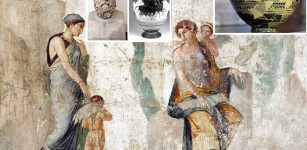 Aphrodite Signified More Than Beauty – Five Other Realms In Which The Greek Goddess Also Reigned
Featured Stories | Sep 18, 2024
Aphrodite Signified More Than Beauty – Five Other Realms In Which The Greek Goddess Also Reigned
Featured Stories | Sep 18, 2024 -
 Yokai Amabie – Protective Ancient Spirit That Can Ward Off Epidemics
Featured Stories | Mar 30, 2020
Yokai Amabie – Protective Ancient Spirit That Can Ward Off Epidemics
Featured Stories | Mar 30, 2020 -
 Bronze Age DNA Shows Direct Genetic Link To Current Inhabitants Of Southern Poland
Archaeology | May 4, 2020
Bronze Age DNA Shows Direct Genetic Link To Current Inhabitants Of Southern Poland
Archaeology | May 4, 2020 -
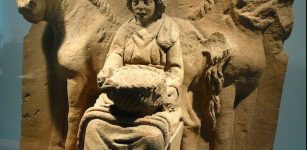 Epona – One Of The Oldest And Widely Known Celtic Deities
Celtic Mythology | Feb 26, 2018
Epona – One Of The Oldest And Widely Known Celtic Deities
Celtic Mythology | Feb 26, 2018 -
 Fragments Of 50-Mile-Long Roman Aqueduct And Road In Cádiz, Spain Revealed By Storm
Archaeology | Mar 10, 2018
Fragments Of 50-Mile-Long Roman Aqueduct And Road In Cádiz, Spain Revealed By Storm
Archaeology | Mar 10, 2018 -
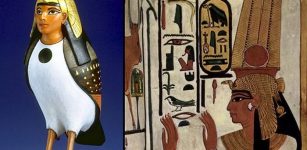 Why Were Ba And Ka Powerful Elements Of Soul In Ancient Egyptian Beliefs?
Egyptian Mythology | Apr 21, 2020
Why Were Ba And Ka Powerful Elements Of Soul In Ancient Egyptian Beliefs?
Egyptian Mythology | Apr 21, 2020 -
 Medieval Mystery Of The Booted Man Found In The Thames Mud
Archaeology | Dec 10, 2018
Medieval Mystery Of The Booted Man Found In The Thames Mud
Archaeology | Dec 10, 2018 -
 Stunning 2000-Year-Old Roman Silver Dagger Used By Legendary Germanic Warriors Discovered By Teenager
Archaeology | Feb 18, 2020
Stunning 2000-Year-Old Roman Silver Dagger Used By Legendary Germanic Warriors Discovered By Teenager
Archaeology | Feb 18, 2020 -
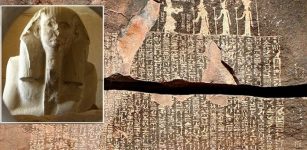 Djoser – Most Outstanding King Of The Third Dynasty In Ancient Egypt And His Step Pyramid
Featured Stories | Sep 7, 2021
Djoser – Most Outstanding King Of The Third Dynasty In Ancient Egypt And His Step Pyramid
Featured Stories | Sep 7, 2021 -
 Underwater Archaeologists Retrieve Over 100 Magnificent Glass Objects at Chengene Skele Bay, Bulgaria
Archaeology | Jul 16, 2024
Underwater Archaeologists Retrieve Over 100 Magnificent Glass Objects at Chengene Skele Bay, Bulgaria
Archaeology | Jul 16, 2024

